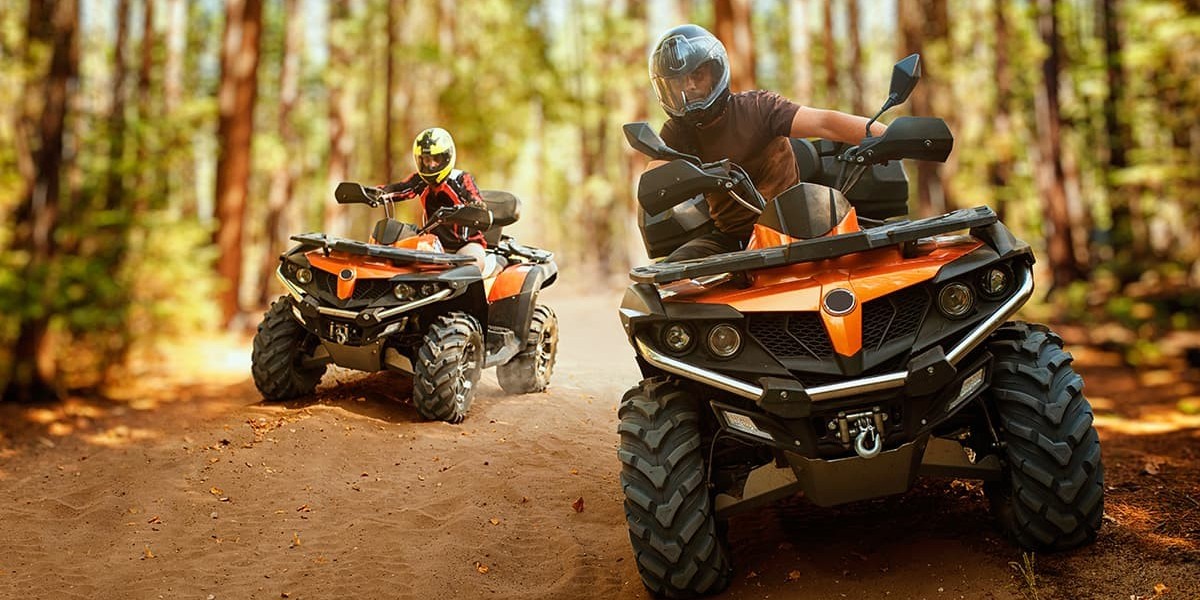When it comes to choosing a side-by-side (SxS) vehicle, one of the most important factors to consider is the weight. Whether you're looking for a nimble, lightweight model for trail riding or a heavy-duty UTV (utility task vehicle) for hauling, the weight of your side-by-side plays a critical role in performance, handling, and towing capacity. In this ultimate guide, we’ll explore the different types of side-by-side weight, how they impact your riding experience, and what to look for when selecting the perfect UTV weight for your needs.
Understanding Side-by-Side Weight
The term "side-by-side weight" refers to the total weight of the vehicle, including its frame, engine, suspension, and any accessories. This weight can vary significantly depending on the model, brand, and type of side-by-side. For example, a lightweight side-by-side may weigh as little as 1,000 pounds, while a heavy-duty UTV weight upwards of 2,000 pounds or more.
Lightweight Side-by-Side Vehicles
Lightweight side-by-sides typically range from 1,000 to 1,500 pounds. These vehicles are designed for agility and are ideal for recreational users who want to enjoy trails, hunting, or light off-roading. With a lower weight, these models offer better fuel efficiency, easier maneuverability, and are often more affordable than their heavier counterparts.
Advantages of Lightweight UTVs:
- Better Fuel Economy: Lighter vehicles require less power to move, meaning they consume less fuel.
- Enhanced Maneuverability: These vehicles are easier to handle on narrow, winding trails, making them perfect for recreational activities.
- Lower Purchase Cost: Lightweight models are generally more affordable and easier to maintain due to their simpler designs.
Examples of Lightweight Side-by-Sides:
- Polaris RZR 170
- Yamaha YXZ1000R
Mid-Range Side-by-Sides
Mid-range UTVs weigh between 1,500 and 1,800 pounds. These side-by-sides strike a balance between performance and capability. They are perfect for individuals who want to tackle more rugged terrain, haul moderate loads, or carry more passengers without sacrificing too much agility. Mid-range side-by-sides often come with better suspension systems and more powerful engines, allowing them to handle a wider variety of tasks.
Advantages of Mid-Range UTVs:
- Versatile Performance: Capable of handling rougher terrain, carrying moderate loads, and offering a smooth ride for multiple passengers.
- Balanced Towing Capacity: These vehicles typically offer towing capacities in the 1,500-2,000 lb range, making them suitable for farm or work tasks.
- More Powerful Engines: With increased engine size, these UTVs offer better performance for off-road adventures.
Examples of Mid-Range Side-by-Sides:
- Can-Am Commander
- Honda Pioneer 1000
Heavy-Duty Side-by-Sides (UTVs)
Heavy-duty UTVs, also known as utility side-by-sides, typically weigh between 1,800 to 2,500 pounds or more. These side-by-sides are designed for serious off-roading, farming, and commercial tasks. They are built to carry heavy loads, tow large trailers, and navigate the toughest terrains. With powerful engines, rugged frames, and advanced suspension systems, heavy-duty UTVs can handle more challenging work environments.
Advantages of Heavy-Duty Side-by-Sides:
- Impressive Towing and Hauling: Capable of towing over 2,000 pounds and hauling heavy loads, making them ideal for agricultural or industrial uses.
- Durability: Built to endure harsh environments, heavy-duty UTVs are more robust and can tackle extreme off-road conditions.
- Increased Payload Capacity: These models can carry more passengers or gear, making them suitable for large groups or heavy-duty work tasks.
Examples of Heavy-Duty Side-by-Sides:
- Polaris Ranger XP 1000
- Kawasaki Mule Pro-FXT
Factors to Consider When Choosing the Right Side-by-Side Weight
When selecting the best side-by-side for your needs, there are several factors to consider regarding weight. Below are key considerations to help you make an informed decision:
- Towing Capacity: The heavier the side-by-side, the more towing capacity it generally has. If you plan to tow heavy trailers, boats, or other vehicles, you’ll need a UTV that can handle the load.
- Payload Capacity: This refers to how much weight the side-by-side can carry, including passengers and gear. Heavy-duty UTVs typically offer higher payload capacities.
- Terrain and Usage: Lighter side-by-sides excel in trails and light off-roading, while heavier models are better for rough terrains, carrying tools, or hauling large loads.
- Fuel Efficiency: Lightweight UTVs tend to be more fuel-efficient due to their lower weight, while heavy-duty models may consume more fuel because of their larger engines and increased load.
- Storage and Transport: If you need to transport your side-by-side frequently, consider its weight and size for easier loading and unloading.
Conclusion
Choosing the right side-by-side weight for your needs can make all the difference in performance, comfort, and efficiency. Whether you're seeking the agility of a lightweight UTV, the versatility of a mid-range side-by-side, or the strength of a heavy-duty model, understanding side-by-side weight is crucial to making an informed decision. Consider your primary use—whether recreational, agricultural, or industrial—along with towing and payload needs, and you’ll be well on your way to selecting the perfect side-by-side for your adventures and work.



